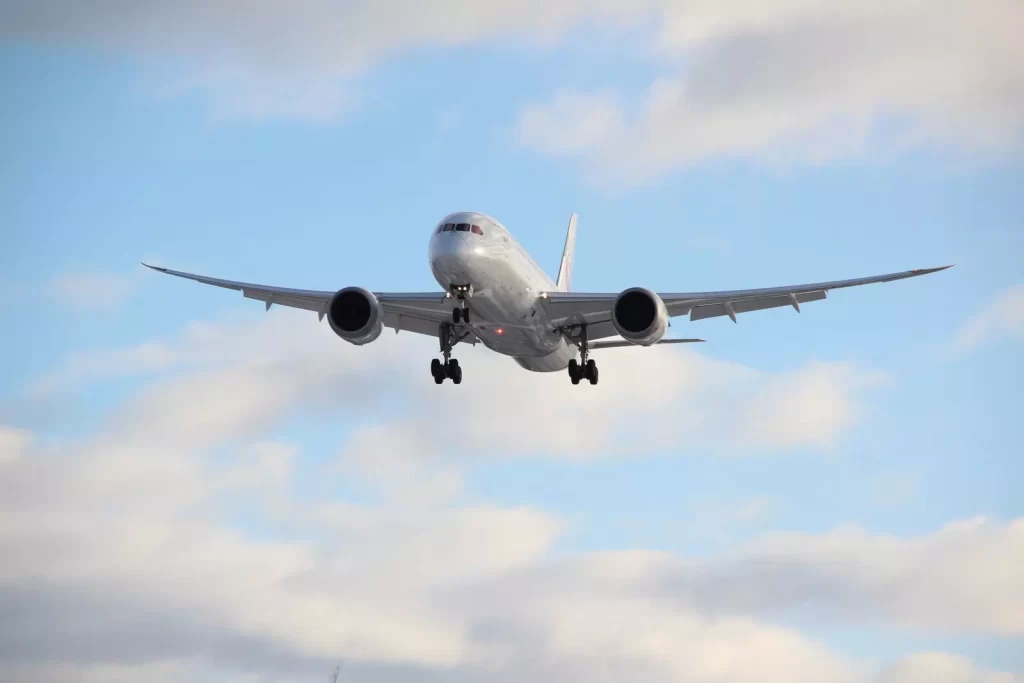The aviation industrythrough the International Civil Aviation Organization (ICAO) made a commitment last year to decarbonize by 2050, but reaching that goal requires maximizing the potential of technological advances, tax incentives and partnerships, he noted. World Economic Forum.
In an article signed by Alejandro De QueroCorderoSustainability, Aerospace and Drones Leader, World Economic Forum highlights that the global aviation industry is responsible for just under 3% of global carbon emissions and is expected to emit more as demand for travel in emerging economies increases.
De QueroCordero indicates that in order to accelerate the process in decarbonization in the aviation industry, there are four alternatives that can be adopted.
- Sustainable aviation fuels
- Electric airplanes
- Hybrid aircraft
- Green hydrogen
The Sustainability, Aerospace and Drones Leader states that aviation is one of the most challenging sectors to decarbonize, requiring all available options, including aircraft powered by hydrogen and electric batteries.
Sustainable aviation fuels
Sustainable aviation fuels (SAFs) are projected to help reduce greenhouse gas (GHG) emissions by between 46% and 65%, so they offer the industry a clear trajectory. However, realizing their potential will require active promotion and appropriate incentives and regulation, the expert says.
According to the Waypoint 2050 report of the Air Transport Action GroupOf these emissions, 96% of the aviation emissions originate from aircraft with more than 100 seats. 66% of these emissions are attributed to highly successful single-aisle aircraft that dominate the market. The remaining 4% are associated with aircraft with up to 100 seats, commonly deployed for regional routes.
"To decarbonize most of these emissions, in the short term, the focus is on UAS, which offer a technically feasible solution using existing aircraft and airport infrastructure," says De QueroCordero.
The challenge is to increase the production and supply of PBS, since, according to the report Making Net-Zero Aviation PossibleIn 2050, meeting demand will require 300 production plants by 2030, with a projected requirement of up to 3,400 plants by 2050.
This need presents a major challenge with respect to feedstock availability, particularly because biomass resources are limited, he explains.
"To scale up SAF in line with 2050 targets, rapid deployment of liquid energy conversion plants is likely to be required after 2030 to overcome the feedstock constraint of bio-based routes. Industry will play a key role in meeting this challenge, but it is clear that government targets, frameworks and policies will be needed to support the widespread adoption of SAF fuels within the aviation industry," he emphasizes.
Electric airplanes
Although projections indicate that electric aviation would deliver emissions reductions of around 2%, this technology is crucial to support the decarbonization roadmap. In particular, battery-electric aircraft offer the advantage of eliminating in-flight emissions, De QueroCordero points out.
According to the report of the Forum, Target True Zero: Unlocking Sustainable Battery and Hydrogen-Powered FlightBy 2035, lithium-ion battery electric aircraft are expected to have a maximum operating range of approximately 400 kilometers, increasing to 600 kilometers by 2050.
If battery-electric aircraft continue to evolve, electrification could be significant within an overall decarbonization framework. Electric motors combined with other technologies, such as electric propulsion with SAF or hydrogen, as in a hybrid aircraft, can significantly extend the range of the aircraft, he notes.
"Governments must define clear targets and milestones for electric and hydrogen battery propulsion ... to attract investors and drive industry action," he says.
Hybrid aircraft
This broader range enhances the regional market potential, positioning hybrid aircraft as a viable alternative to new turboprop designs that can substantially reduce emissions compared to smaller jet aircraft. In addition, hybrid aircraft can help facilitate safety and security certification processes for electric engines and hydrogen concepts. In addition, in the short term, hybrid aircraft can help decarbonize ground operations during taxi, takeoff and landing, offering immediate environmental benefits.
De QueroCordero clarifies that several technical efforts must be combined to successfully implement the electric battery: ensuring renewable charging sources, optimizing battery life cycles and improving energy density to significantly improve aircraft range and efficiency, further supporting its viability as a sustainable aviation solution.
Green hydrogen
The expert details that about 26% of the emissions reduction still depends on hydrogen, which means accelerating green hydrogen production capacity by 2035.
A sufficient supply of green hydrogen is essential, and advances in fuel cell technology and lighter storage tanks are vital to optimize the efficiency and range of a hydrogen-powered aircraft.
"Designing aircraft with hydrogen performance in mind, including the strategic placement of hydrogen tanks, is crucial to maximizing their capabilities and reducing environmental impact, he says.
Efforts should also focus on investigating and mitigating the potential impact of contrails formed by hydrogen-fueled aircraft containing increased water vapor.
By prioritizing these considerations, the aviation industry can unlock the full potential of hydrogen technology and drive the transition to a sustainable, decarbonized future.
Source: World Economic Foruml


